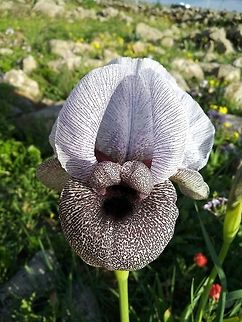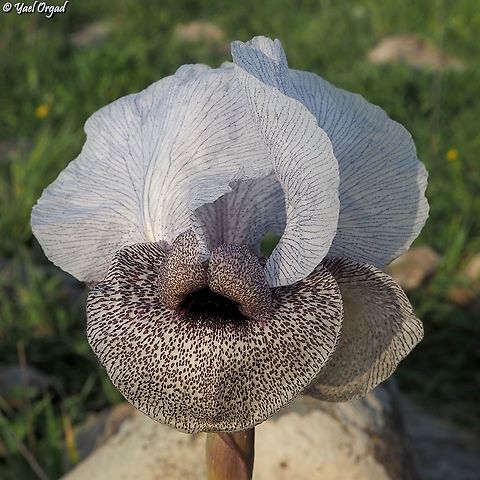
Appearance
It is a geophyte, with a stout compact rhizome. Which separates it from ''Iris bismarckiana'' , with a similar flower form and other morphological characters, but which has a stoloniferous rhizome.It has 9 leaves, which are linear, straight and erect. Compared to ''Iris westii'' , which are short and curved. The leaves can grow up to between 30 cm long and 1.8 cm wide.
It has a slender stem or peduncle, that can grow up to between 30–50 cm tall.
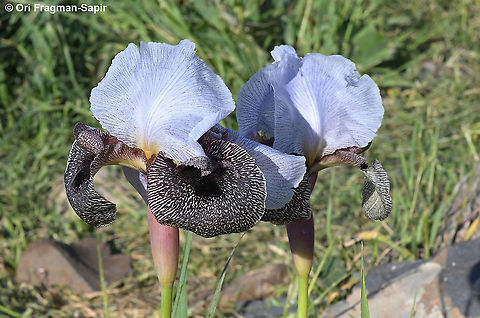
Status
''I. hermona'' is currently assessed as being a Vulnerable species, since 2016, it is very rare on the Golan Heights and on Mount Hermon.In the past, it has been picked and uprooted due to its flowers, attacked by herbivore, also its habitat has suffered from military tank exercises and other military exercises on the Golan. The populations have also been affected by cattle grazing, settlement development and the creation of vineyards and other agricultural development.
The iris is a protected wildflower, and fortunately some populations of the iris can be found inside a couple of mine fields. In Keshet, Golan a settlement area was widened, and a population of the iris was trans-located, but after 3 years only 6 plants had survived out of 120.
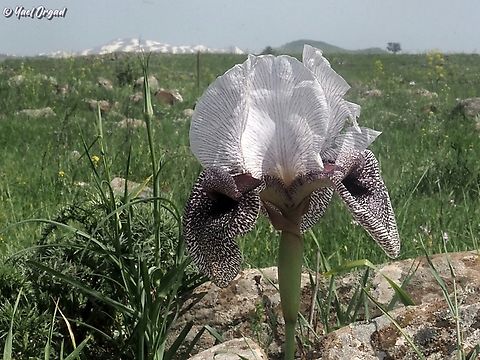
Habitat
It grows in open places like pasture lands, on the edges of oak scrub, steppes, or rocky meadows. On heavy soils, including rocky basalt, heavy basalt soils. or dark brown limestone soils.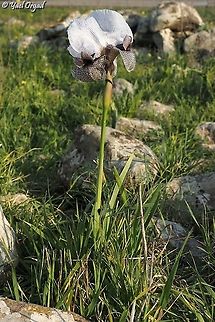
Defense
Like many other irises, most parts of the plant are poisonous , if mistakenly ingested can cause stomach pains and vomiting. Also handling the plant may cause skin irritation or an allergic reaction.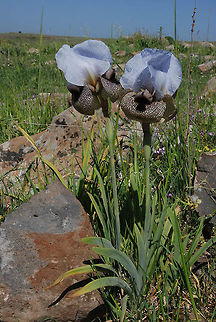
Cultural
It is also found on the roof of a medieval grave of a local sheikh in the Golan Heights.On 19 June 2016, the National Gallery of Art in Vilnius, held an exhibition of photos by photographer Sharon Ya’ari, ''I. hermona'' was included as part of his "Red Slide" series .
References:
Some text fragments are auto parsed from Wikipedia.
